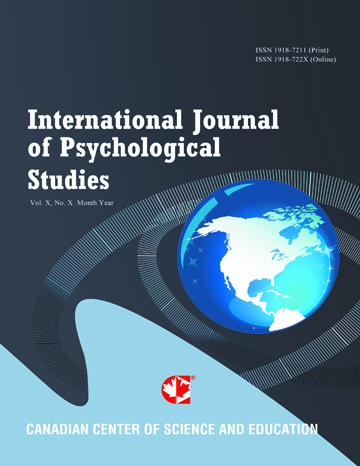The Role of Life Satisfaction and Volunteering Frequency in Predicting Youth Contribution to Self, Family and Community
- Inga Truskauskaite-Kuneviciene
Abstract
This study aims to explore relationships between life satisfaction, volunteering frequency and contribution to self, family and community for youth in Lithuania and to compare these relationships for boys and girls. Data from a two-wave longitudinal study of a youth community sample was used. The sample size for this study was N = 1,140 (52.7% girls and 47.3% boys). The age of participants ranged from 14 to 19 at T1 (Mage=16.61, SDage=1.24 at T1) and from 15 to 19 at T2 (Mage=17.1, SDage=0.93 at T2). Structural equation modeling (SEM) was used to measure and analyze the relationships of observed and latent variables. The results indicate that life satisfaction and volunteering frequency positively predict contribution to self, family (for boys only) and community.
- Full Text:
 PDF
PDF
- DOI:10.5539/ijps.v7n1p51
Journal Metrics
1. Citations (March 2025): 10975
3. i10-index (March 2025): 233
For details about the Journal Metrics, please visit the Google Scholar website.
Index
- AcademicKeys
- CNKI Scholar
- Elektronische Zeitschriftenbibliothek (EZB)
- Excellence in Research for Australia (ERA)
- GETIT@YALE (Yale University Library)
- Harvard Library E-Journals
- JournalSeek
- JournalTOCs
- LOCKSS
- MIAR
- Open Access Journals Search Engine(OAJSE)
- Open J-Gate
- PKP Open Archives Harvester
- SHERPA/RoMEO
- Standard Periodical Directory
- The Keepers Registry
- UCR Library
- Ulrich's
- Universe Digital Library
- WorldCat
Contact
- Barbara SunEditorial Assistant
- ijps@ccsenet.org
